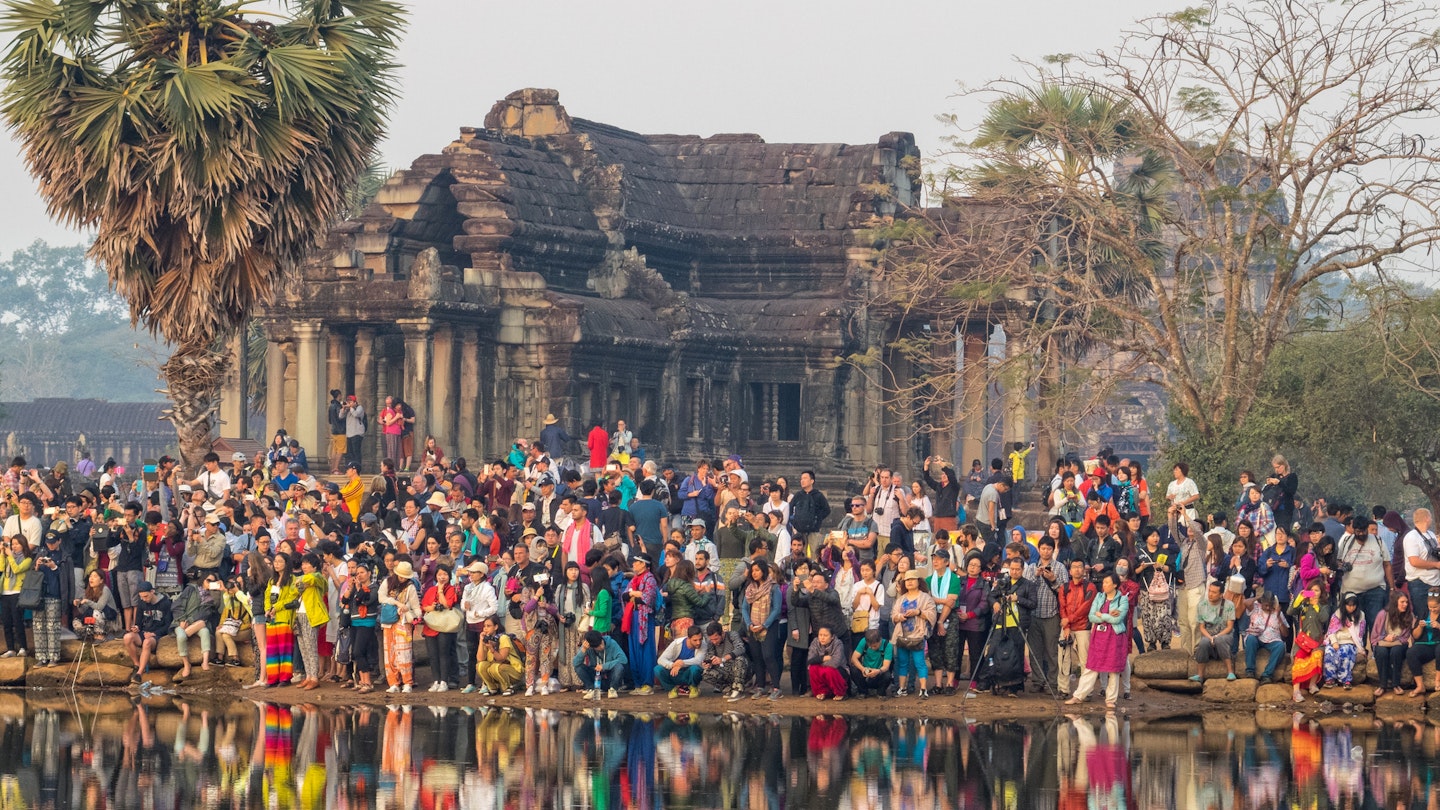Some Cambodians wryly observe that Cambodia has three seasons – hot, hotter and hottest – but in reality, there are distinct dry and wet seasons that define the harvest cycle and dramatically alter the character of the landscape in this fascinating Southeast Asian nation.
The dry season runs from November to May, and the “cool season” months of November to February are the most popular time to visit Cambodia due to milder temperatures. The countryside appears somewhat parched from February to May when daytime temperatures can soar above 40°C (104°F).
The wet season usually runs from June to October, coinciding with the southwest monsoon. However, it’s not necessarily a bad time to travel to Cambodia. It usually only rains heavily once a day towards sunset, the countryside is a blaze of green, and many hotels and resorts offer substantial discounts.
The High Season (November–March): Ideal for Exploring Temples
During the “winter” months in Southeast Asia, temperatures in Cambodia are much more moderate. The mercury occasionally drops below 20°C (68°F), making temple exploration much more pleasant. However, this is also the most crowded time at famous sites like Angkor. Lots of accommodation is fully booked in advance, particularly over the Christmas and New Year period and during Chinese New Year, which varies between January and February.
The Shoulder Season (July–August): Best for Families
Although this is the middle of Cambodia’s wet season, it typically does not rain excessively, providing a balance of good weather. Families from Europe and North America benefit from long school holidays and discounted prices at hotels and resorts during this time. Moreover, fewer tourists explore Angkor during the “green season,” creating an intimate experience among the enchanting moss-covered temples and moats filled with water.
The Low Season (April–June & September–October): Opportunity for Discounts
April and May are characterized by scorching temperatures, while September and October bring significant rain. Despite the weather, this is when numerous accommodation providers offer their best special offers. You can save money on stays at luxury resorts, making it an attractive time for budget-savvy travelers. September and October also present lush landscapes and captivating cloud formations.
A Month-by-Month Planner for Traveling in Cambodia
Cambodia’s major festivals follow the lunar calendar and can span multiple Gregorian months. Here’s a month-by-month breakdown of what to expect throughout the year.
January–March: The Busiest Time of Year
This period marks peak tourist season in Cambodia, especially in Phnom Penh and Siem Reap. The internationally recognized New Year celebrations lead into Chinese and Vietnamese festivities, ensuring a vibrant atmosphere.
Chaul Chnam Chen & Tet: The Chinese New Year, known locally as Chaul Chnam Chen, coincides with Tet, the Vietnamese New Year, which can fall in either January or February depending on the year. Consequently, many of Phnom Penh’s businesses close for celebrations, featuring dragon dances across the capital.
April–June: Festivals and the Start of the Rains
This period marks the beginning of the low season as the monsoon arrives, ushering in regular rainfall until October. April is significant for Khmers, signifying the Cambodian New Year. However, temperatures can spike to 40°C (104°F).
Chaul Chnam Khmer: Celebrated mid-April, this three-day event features offerings at wats, home cleaning, and gift exchange. It is a festive time, marked by enthusiastic water fights throughout the countryside.
Chat Preah Nengkal (Royal Ploughing Ceremony): This ancient agricultural festival led by the royal family signals the start of the rice-growing season and occurs in early May.
Visakha Puja (Buddha Day): This celebration of Buddha’s teachings occurs during the eighth day of the fourth moon, featuring processions of monks carrying candles through Angkor Wat at night.
July–September: More Celebrations and Backpackers
Tourism typically increases as backpackers seize university holidays. However, September often turns out to be the wettest month, with sporadic flooding prevalent. The Khmer calendar’s second-most-important festival, P’chum Ben, usually falls in September or October.
P’chum Ben (Festival of the Dead): Similar to All Souls’ Day, this festival is marked by paying respects through offerings at wats and lasts several days, inviting locals to vibrant ceremonies.
October–December: Transition to Warm, Dry Winds
While October may still see rains, the countrysides explode with greenery, making for exceptional boat travel experiences. By November, the dry and windy season begins, leading into peak tourist season lasting until February. Festivities like the Bon Om Tuk (Water Festival) occur, celebrating the victory of King Jayavarman VII and the natural phenomenon of the Tonlé Sap River’s flow reversal.
Angkor Wat Half Marathon: This popular December event offers a stunning backdrop for participants, featuring multiple race options to engage both seasoned runners and casual participants alike.





